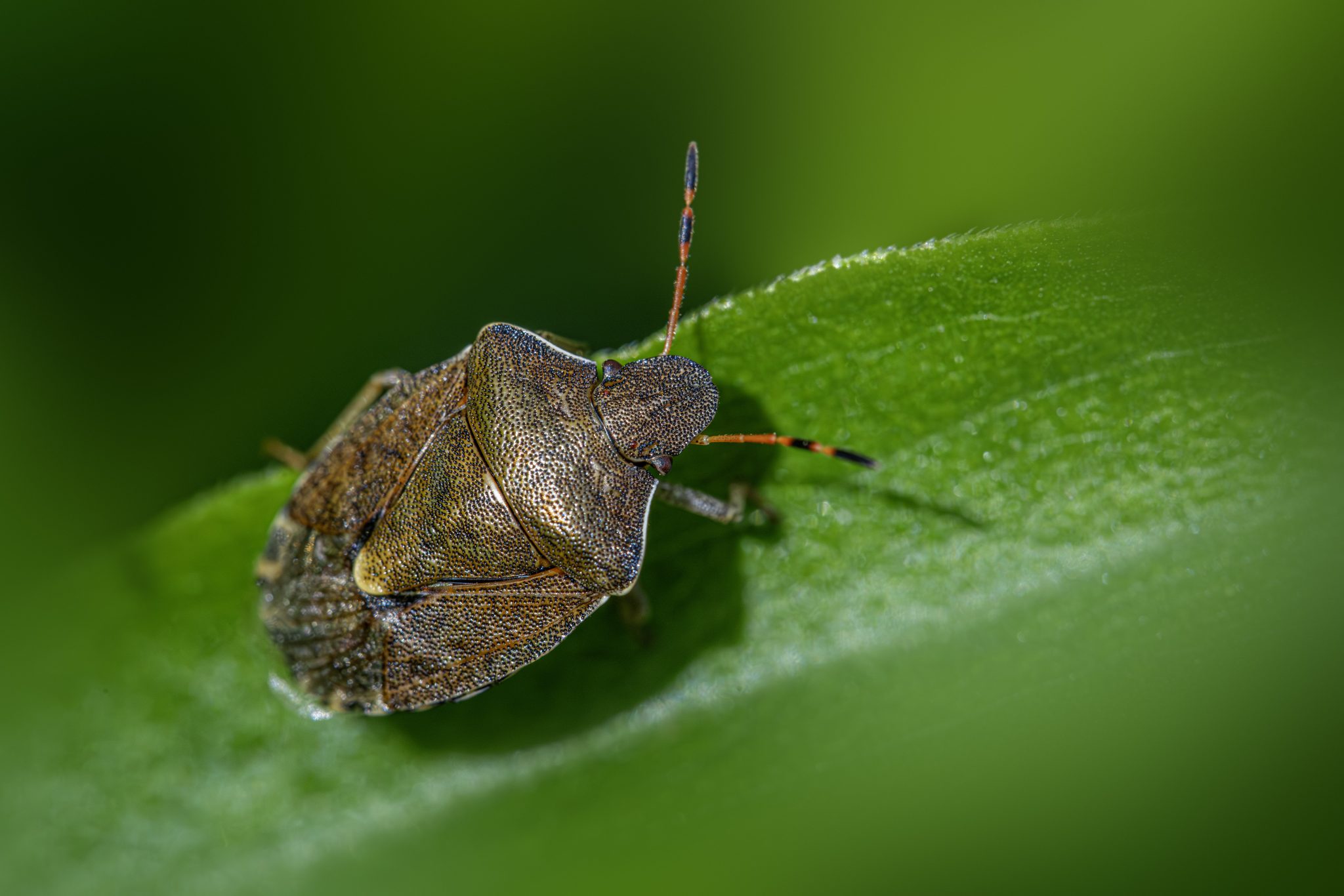Here’s a detailed natural history overview of the Stink Bug (Holcostethus limbolarius):
🛡️ Stink Bug (Holcostethus limbolarius)
Taxonomy:
- Order: Hemiptera
- Family: Pentatomidae (Stink Bugs)
- Genus: Holcostethus
- Species: Holcostethus limbolarius
🪲 Identification
Holcostethus limbolarius is a medium-sized stink bug distinguished by its broad shield-shaped body and delicate mottled pattern of brown, tan, and gray. A key feature is the pale margin (limb) along the outer edge of the pronotum and abdomen, which gives the species its name (“limbolarius” = bordered).
Adults typically measure 6–8 mm in length and have a somewhat rough, punctured texture on the exoskeleton. Like other pentatomids, they possess piercing-sucking mouthparts and a five-segmented antenna.
🌿 Habitat and Distribution
This species occurs widely across Europe, North Africa, and parts of Western Asia, favoring dry, sunny habitats such as:
- Meadows and grasslands
- Field edges and roadsides
- Gardens and agricultural margins
It is frequently found on composite plants (Asteraceae) and legumes, often resting on stems or undersides of leaves.
🌱 Feeding and Behavior
Holcostethus limbolarius is phytophagous (plant-feeding). Using its long rostrum, it pierces stems, seeds, or developing fruits to extract sap.
Although not considered a major pest, in large numbers it can cause discoloration or deformation of seed heads, especially in agricultural fields.
When disturbed, it releases a strong, pungent odor from thoracic glands — a defensive chemical typical of stink bugs — to deter predators.
🐞 Life Cycle
Like all true bugs, H. limbolarius undergoes incomplete metamorphosis, passing through five nymphal instars before adulthood.
- Eggs are laid in clusters on host plants.
- Nymphs resemble miniature wingless adults and darken with age.
- Adults appear from late spring through autumn, often overwintering in leaf litter or plant debris.
⚙️ Special Adaptations
- Defensive odor glands for predator deterrence.
- Camouflage coloration blends into dry vegetation and soil.
- Tough exoskeleton protects against predatory insects and birds.
🌍 Ecological Role
Although sometimes minor crop feeders, Holcostethus limbolarius plays a part in the natural balance of grassland ecosystems, serving as prey for spiders, parasitoid wasps, and ground beetles. Its presence helps indicate the health of semi-natural field margins.
📏 Key Facts
- Length: 6–8 mm
- Color: Mottled brown and gray with pale border
- Habitat: Dry grasslands, field edges, meadows
- Range: Europe, North Africa, Western Asia
- Active period: May to October
Views: 202
Subscribe to the newsletter:
